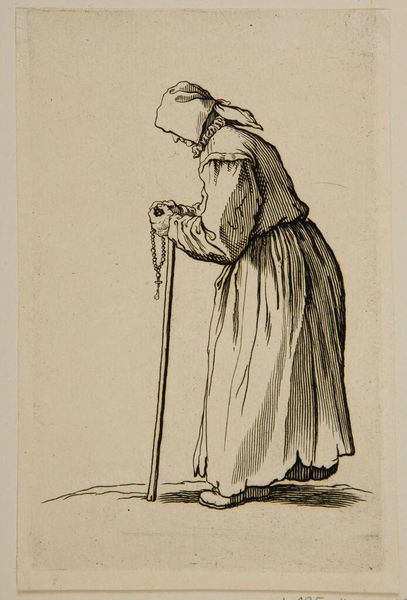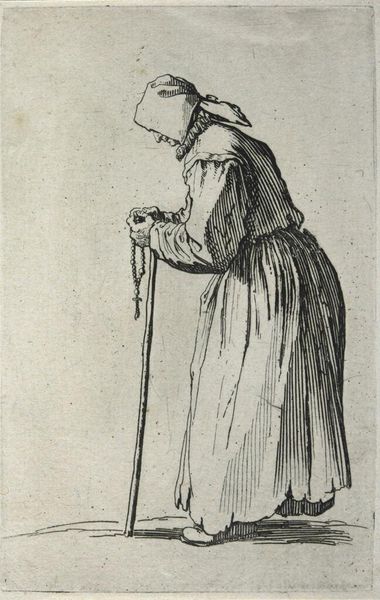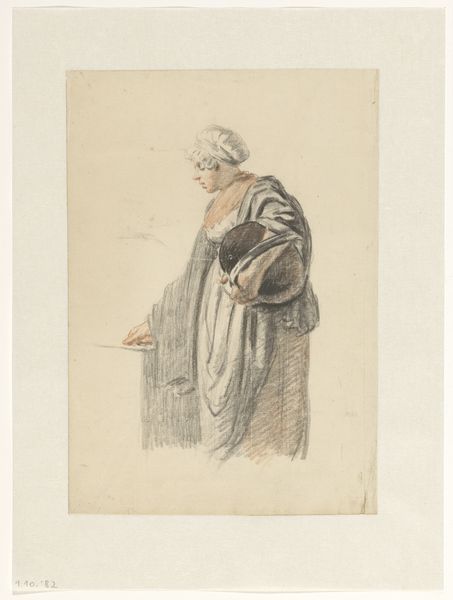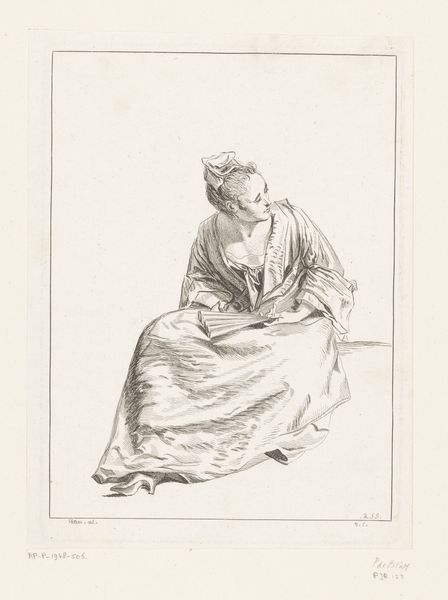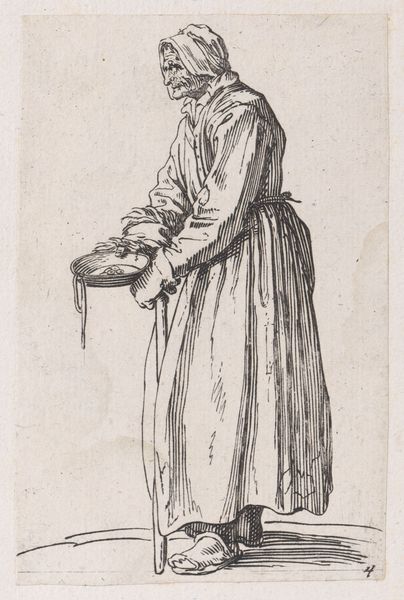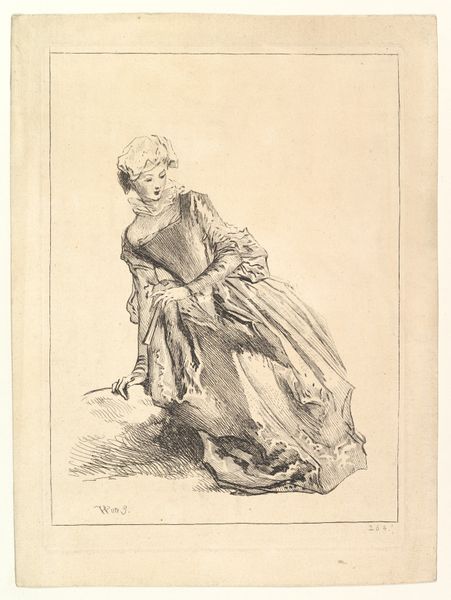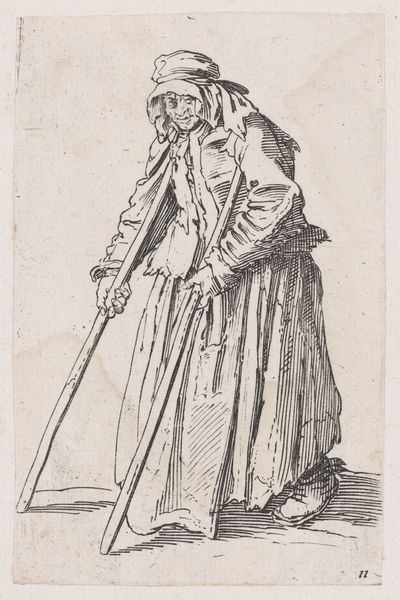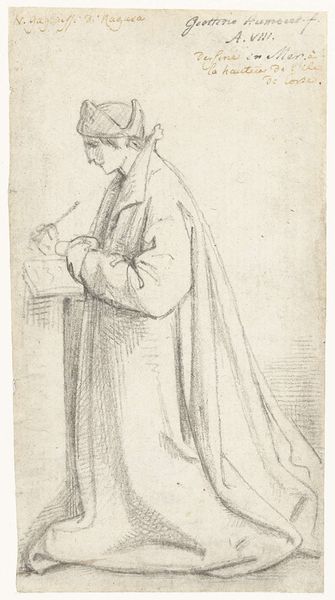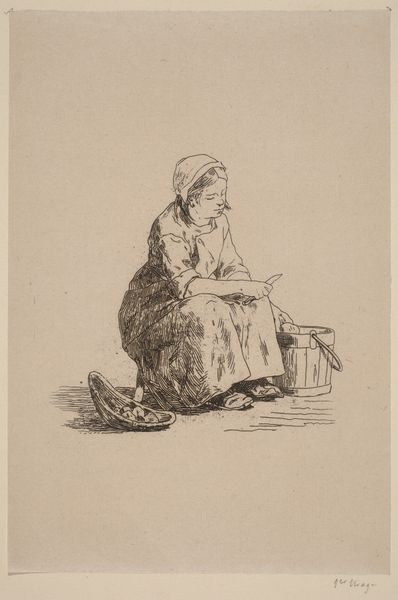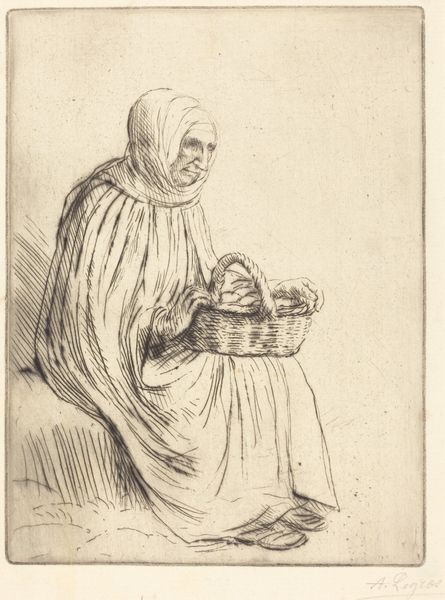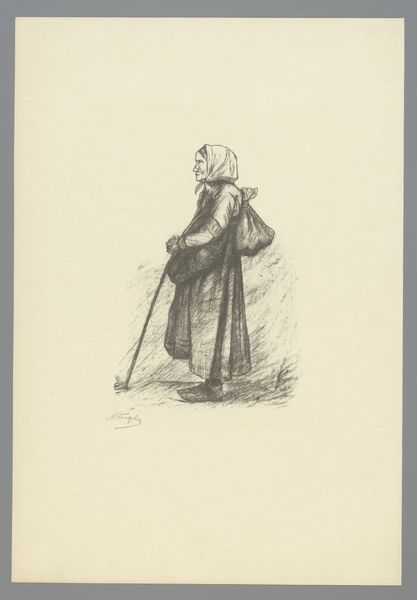
drawing, print, ink, woodcut
#
portrait
#
drawing
# print
#
ink
#
woodcut
#
genre-painting
#
realism
Dimensions: 122 mm (height) x 83 mm (width) (bladmaal)
Curator: This compelling woodcut by Carl Peter Theodor Rothweiler, dating to 1843, is entitled "Tiggende kone." The print depicts an elderly woman in profile. She leans heavily on a walking stick while holding a rosary, her head bowed low. Editor: It’s intensely melancholic. The stark black lines carve out deep wrinkles and folds in her clothing, which makes the woman appear worn down by time and hardship. I'm immediately drawn to her hunched posture. It speaks volumes about the vulnerabilities of old age and poverty. Curator: Rothweiler’s style embodies realism; the scene seems extracted from the everyday, highlighting the presence of older women within 19th-century Danish society. Consider, too, the significance of the rosary – a tangible symbol of faith in the face of adversity and perhaps the artist's message regarding this person's inner world. Editor: Absolutely. That symbolism is key. The rosary emphasizes her dependence on spiritual solace. It's crucial to remember how socio-economic factors intersected with religion in shaping identities, especially for women. This piece, therefore, transcends mere observation; it silently critiques a social structure that necessitates such reliance on faith for survival. Curator: And through genre-painting, the woodcut directs attention to societal structures, as you suggested. We should consider the extent to which Rothweiler's piece contributed to the discourse surrounding poverty, and specifically how older women facing impoverishment were viewed during his time. Editor: Right, what commentary is at play here? I wonder, who was the audience intended to be, and how did Rothweiler wish the person encountering this depiction to react to the social issue represented in front of them? Is the bowed head and rosary meant to inspire feelings of shame, empathy, or perhaps both? These tools invite scrutiny of social responsibility. Curator: Such powerful emotional dynamics stem in part from Rothweiler's successful implementation of lines and shape. Look closely. You see the starkness highlights details— from her weathered face to her tattered garments — to convey the toll of years and struggles. She really does seem resigned. Editor: Well, despite the artist's choice to give a sense of her internal resignation to a specific role within her era, I find enduring relevance within her resilience to a changing world order. Curator: Indeed. Rothweiler offers more than a simple portrait. Editor: I agree. By prompting questions of class, age, and devotion, he challenges us to engage with an urgent intersectional discourse.
Comments
No comments
Be the first to comment and join the conversation on the ultimate creative platform.

